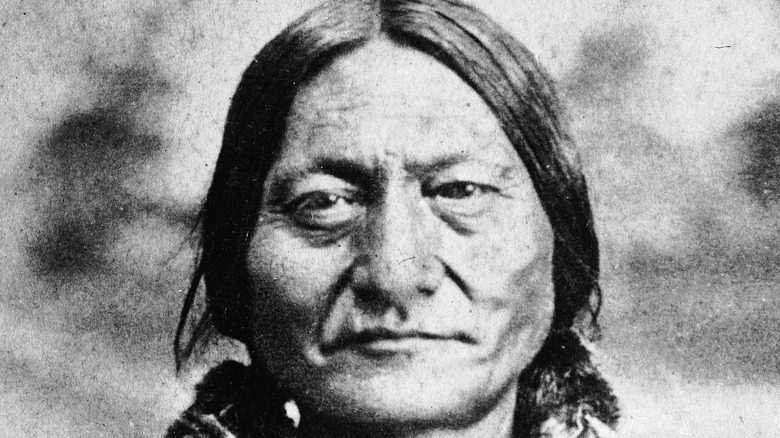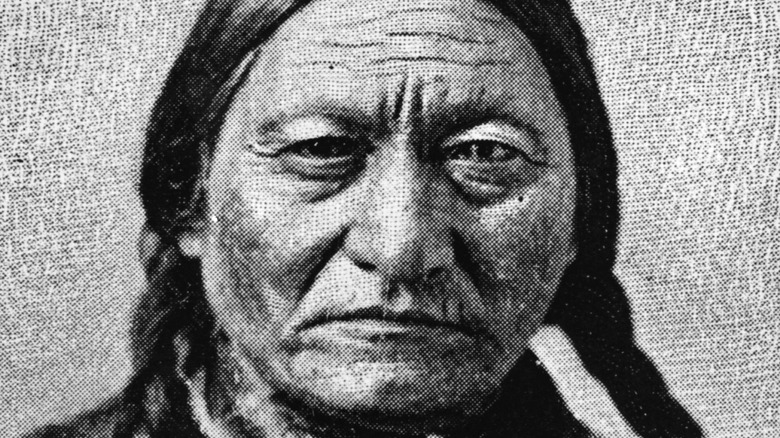Why Sitting Bull Was Exiled In Canada
Sitting Bull was a Hunkpapa Lakota Sioux leader in the mid-to-late 19th century. With a stoic profile in surviving photographs and successful military leadership in battles like Little Big Horn, Sitting Bull has come to symbolize the noble resistance of Indigenous American populations to white encroachment on their ancestral homeland.
Sitting Bull knew full well the predicament his people were in due to waves and waves of white settlers encroaching on the area where his people had long lived peacefully. According to The Canadian Encyclopedia, when the Sioux chief was born in 1831, the plains were already overrun with European settlers from the east. After gold was discovered in what is now called the Black Hills in North Dakota — protected by a treaty, which was subsequently broken — white settlers flocked to the area in even greater numbers, searching for riches in a place long considered sacred by Sitting Bull and his people.
Sitting Bull decided to fight, culminating in the Battle at Little Bighorn in 1876 and General Custer's defeat, according to History. For these reasons and more, Sitting Bull is an important part of the American story. A little-known chapter in his life, however, is that time he spent time exiled in Canada.
He was driven out
Following the embarrassing defeat of General Custer at the Battle at Little Bighorn, Sitting Bull and his followers endured the full fury of the American military. The Sioux were offered peace, but in return, they would have to give up their guns, horses, and ancestral homelands, settling instead into reserves designated by the federal government. In the view of Sitting Bull and his people, this was no deal at all, according to The Canadian Encyclopedia.
As a consequence, further skirmishes were fought between Sitting Bull's indigenous populations and the American forces. Depleting buffalo herds and persistent fighting forced Sitting Bull to formulate an exit strategy from what is now Montana. In 1877, Sitting Bull and his people relocated north of the border to Canada (via History). At first, Canadian authorities offered Sitting Bull and his people protection, so long as they complied with Canadian law. When a request for a reserve for Sitting Bull's people was denied, however, food supplies were also cut off by the Canadian government, which was nervous that Sitting Bull's presence would worsen tensions in the area. When American hunters set fire to the border, preventing any remaining buffalos from roaming north, the Sioux had no choice but to reluctantly return to the U.S. and take a deal from the U.S. government.
Sitting Bull, however, was among the last to surrender in 1881, settling at last at Standing Rock Reserve in North Dakota. Sitting Bull would die in a gunfight in 1890, but understanding why Sitting Bull was exiled to the United States' neighbor to the north presents a fuller picture of the indigenous leader's often triumphant but ultimately tragic life.

